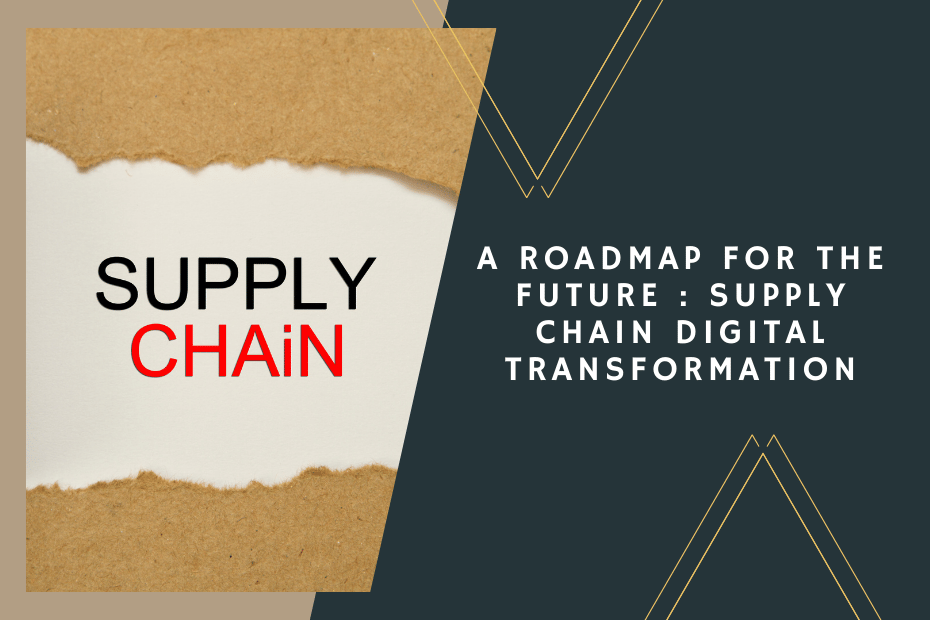In today’s rapidly evolving global market, supply chain digital transformation has become a critical priority for businesses seeking to remain competitive and responsive to dynamic market conditions. This transformation involves leveraging advanced technologies to enhance efficiency, transparency, and agility across the supply chain, allowing companies to optimize operations and respond swiftly to disruptions. The journey towards digital transformation is multifaceted, requiring a strategic approach, substantial investment in technology, and a commitment to continuous improvement. This article provides a comprehensive roadmap for supply chain digital transformation, detailing essential steps, key technologies, and strategies that businesses can adopt to successfully navigate this complex landscape.
Understanding Digital Transformation
Digital transformation in supply chain management is about integrating advanced technologies to streamline operations, improve decision-making, and enhance overall efficiency. Key technologies driving this transformation include the Internet of Things (IoT), artificial intelligence (AI), blockchain, and advanced data analytics. IoT devices can provide real-time tracking of goods and conditions, AI can optimize inventory levels and predict demand, blockchain ensures secure and transparent transactions, and advanced analytics provide deep insights into supply chain performance. This interconnected ecosystem allows for more informed decisions, reduced operational costs, and improved customer satisfaction, creating a smart supply chain that is resilient and adaptable to changes .
Developing a Clear Strategy
A successful digital transformation begins with a clear, well-defined strategy that aligns with the organization’s overall goals and objectives. This strategy should outline the desired outcomes, such as improved efficiency, cost reduction, or enhanced customer satisfaction, and the steps needed to achieve them. Companies must assess their current capabilities, identify gaps, and prioritize areas for improvement. This involves collaboration across different departments to ensure the digital strategy supports all aspects of the supply chain, from procurement to delivery. A comprehensive strategy will also include a timeline for implementation, resource allocation, and metrics for measuring success, ensuring that all stakeholders are aligned and committed to the transformation process .
Investing in Technology
Investing in the right technologies is crucial for supply chain digital transformation. IoT devices can provide real-time data on the location and condition of goods, enhancing visibility and traceability. AI can optimize various supply chain processes, from inventory management to demand forecasting, by analyzing vast amounts of data and providing actionable insights. Blockchain technology offers secure and transparent transaction records, reducing the risk of fraud and errors. Additionally, cloud-based platforms enable seamless data sharing and collaboration among supply chain partners, improving overall efficiency. These technologies not only enhance operational efficiency but also improve the agility and resilience of the supply chain, allowing businesses to respond quickly to disruptions .
Enhancing Data Management and Analytics
Effective data management and analytics are at the heart of digital transformation. Businesses generate vast amounts of data from various sources, including sensors, transactions, and customer interactions. To harness the power of this data, companies must invest in advanced analytics tools that can process and analyze large datasets to provide actionable insights. Predictive analytics can help anticipate demand fluctuations, optimize inventory, and improve supply chain planning. Additionally, data visualization tools can make complex data more accessible and understandable, aiding decision-making processes. By leveraging these tools, businesses can gain a deeper understanding of their supply chain dynamics and make more informed strategic decisions .
Building a Resilient Supply Chain
Resilience is a critical component of a successful supply chain. Digital transformation enables businesses to build more resilient supply chains by improving visibility and flexibility. For instance, real-time tracking and monitoring can help identify potential disruptions early, allowing companies to take proactive measures. Diversifying suppliers and sourcing locations can also mitigate risks associated with geopolitical tensions or natural disasters. By integrating digital technologies, businesses can enhance their ability to adapt to changes and maintain continuity in their operations. Building resilience involves not only technological investments but also strategic planning and risk management practices that ensure the supply chain can withstand and recover from disruptions .
Fostering Collaboration and Integration
Collaboration and integration are essential for maximizing the benefits of digital transformation. Companies should work closely with their supply chain partners, including suppliers, logistics providers, and customers, to ensure seamless data sharing and communication. Integrating digital platforms across the supply chain can streamline operations, reduce delays, and improve overall efficiency. Collaborative tools such as cloud-based systems and digital twins can enhance transparency and coordination, enabling all parties to work together more effectively towards common goals. By fostering a collaborative environment, businesses can leverage the collective expertise and resources of their partners to drive innovation and achieve greater efficiencies.
Continuous Improvement and Innovation
Digital transformation is an ongoing process that requires continuous improvement and innovation. Companies must regularly evaluate their performance, gather feedback from stakeholders, and identify areas for further enhancement. Implementing a culture of continuous improvement, supported by agile methodologies, can help businesses stay ahead of the competition and adapt to evolving market conditions. Encouraging innovation and experimentation with new technologies can lead to breakthroughs that further optimize supply chain operations. Monitoring and evaluating sustainability performance through key performance indicators (KPIs) and data analytics help identify areas for improvement and ensure that sustainability goals are met. Continuous improvement also involves staying informed about new developments in sustainability practices and technologies, ensuring that the company remains at the forefront of sustainable supply chain management.
In Conclusion
Supply chain digital transformation is a complex but essential journey for businesses aiming to thrive in today’s competitive market. By developing a clear strategy, investing in the right technologies, enhancing data management, building resilience, fostering collaboration, and embracing continuous improvement, companies can create a smart, agile, and efficient supply chain. As the digital landscape continues to evolve, staying committed to these principles will be crucial for achieving long-term success and sustainability in supply chain management. Understanding and addressing these factors is crucial for maintaining a competitive edge and ensuring the smooth and efficient operation of global supply chains.

